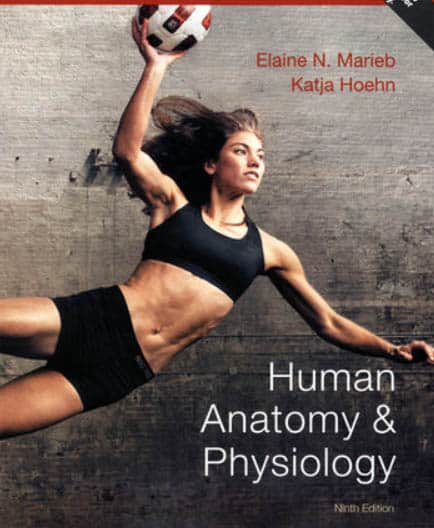Matter
is anything that occupies space and has mass
State of mater
solid, liquid and gaseous state
energy
is the capacity to do work
kinetic energy
is energy in action
potencial energy
Is stored energy
form of energy
chemical energy, electrical energy, mechanical energy, radiant energy or electromagnetic energy
Make up about 96% of our body
carbon, oxygen,hydrogen,and nitrogen
atom
means indivisible, are clusters of even smaller particles called protons, neutrons and electrons.
oxygen function
a major componenof both organic(carbon conaining) and inorganic (non-carbon contain) moleculas. t it is need for the production of cellular energy.
carbon function
a primary component of all organic molecules, which include carbohydrates, lipids(fat) proteins and nucleid acid.
nitrogen function
a component of proteins and nucleic acid.
atomic number
is equal to tne number of protons
the mass number
is the sum of the protons and neutrons
isotopes
elements have two o more structural variation
ridioisotopes
the disintegration of a radioactive nucleus may be compared to tiny explosion
molecule
combination of two or more atoms bind, they form molecules of a compound
Mixture
Are substance composed of two or more component phisically intermix
Solution
homogeneous, will not settler
Colloids
Are heterogeneous mixtures. Often appear translucent or milky and although the solute particle are larger that those in true solutions, they still o not settle out.example jell-O
Suspension
Are heterogeneous mixture with large, often visible solutes that tent to settle out. Example mixture of salt and water and blood
Chemical bonds
It is a energy relationship between the electrons of the reacting atoms.
Metabolism
All the chemical reaction has occur in a living organs
Catalys
Chemical that help speed up chemical reaction with out itself being used up
Oxidation reduction
Something oxide is remove
Dehydrogeneration
Remove hydrogeneration
Inorganic
Any chemical that does not contain carb
Organic
Any chemical that contain carb
Homogeneous solution
Everything disolve.ex salt
Heterogeneous
Is never a true solution . Ex. Flour
Proteins
Is not a truly dissolve because is too heavy
Ph
Ph is the scale on the number of hydrogen ion in solution
Salt
Is an ionic compound containing cations and anions
Hydrolysis
Opposite of dehydration synthesis
Types of chemical bonds
Ionic bond, covalent bond, hydrogen bond
Ionic bound
a bond which electrons are complely lost or gained by the atoms involved
Nonpolar molecules
Electrically balanced
Polar molecules
Containing atoms with different electrons -attracting ability
Covalent bond
Two different atoms share the same electrons
Biochemistry
Is the study of the chemical composition and reaction of living matter
Water
Is the most abundant and important inorganic compound in living material. It make up 60-80% of volume of most living cells
Acids
Have a sour taste, can react with many metals.
Acid and bases
Like salt they are electrolyte
Buffers
A buffer is a solution containing either a weak acid and its salt or a weak base and its salt, which is resistant to changes in pH.
Carbohydrates
A group of molecules that includes sugar and starches
Monosaccharides
Or simple sugar , ex. Glucose , fructose, galactose.
Disaccharides
Double sugar, it's formed when two monosaccharides are join by dehydration synthesis
Polysaccharides
Simple sugar linked together by dehydration synthesis
Lipid
Contain carbon, hydrogen,and oxygen.( fat in the body)
Triglycerides
Neutral fats, it composed of two types of building block, fatty acid and glycerol. Fat deposits
Fatty acids
Are linear chains of carbon and hydrogen atoms with an organic acid group at the end.
cation
electrically charged particle due to loss of an electron
hydrogen bond
a bond which electrons are shared equally
electrical energy
legs moving the pedal of a bicycle
chemical energy
when the bondsof ATP are broken, is released to do cellular work
mechanical energy
represented by the flow of charged particles along a conductor, or flow of ions acrossa membrance
cholesterol fuction
the structural basic for manufactory of all body steroids. a component of cell membrane
trans fat`
increasing the risk of heart disease even more that the solid animal fat
phospolipids
are modified triglycerides
steroid
are fat soluble and contain little oxygen
amino acid
the building block of proteins
peptide bond
two united amino acid
the nucleic acid
composed of carbon, oxygen, hydrogen, nitrogen and phosphorus, are the largest molecules in the body. has two major class of molecules Deoxiribonucleic acid(DNA) and ribonucleic acid (RNA)
DNA
is the genetic material
RNA
carried out the genetic instructions for protein synthesis
DNA bases
Adenine, guanine, cytosine, thymine
RNA bases
Adenine, guanine, cytosine, uracil
